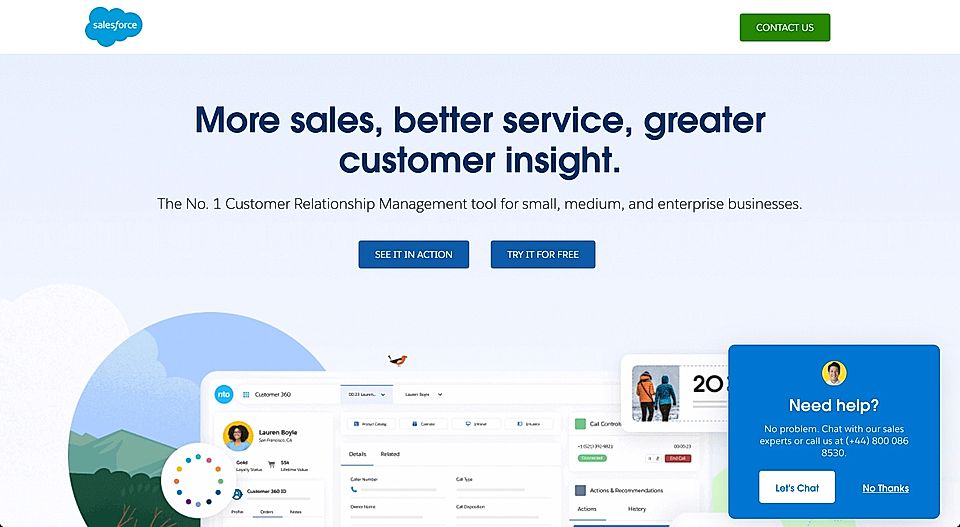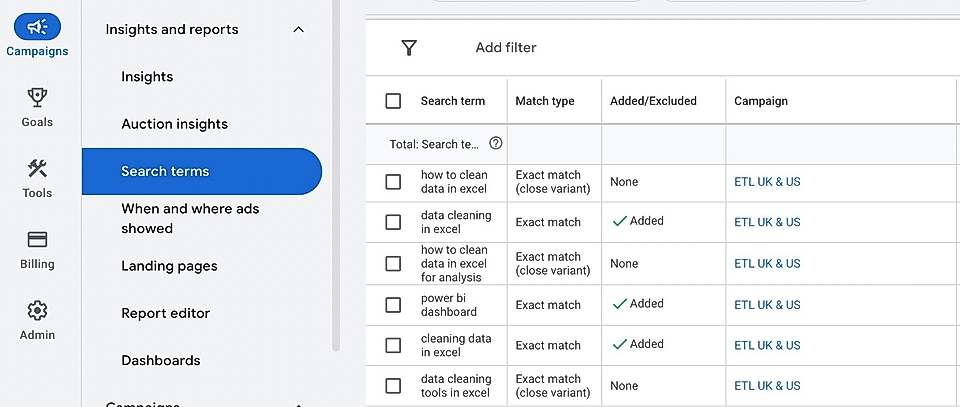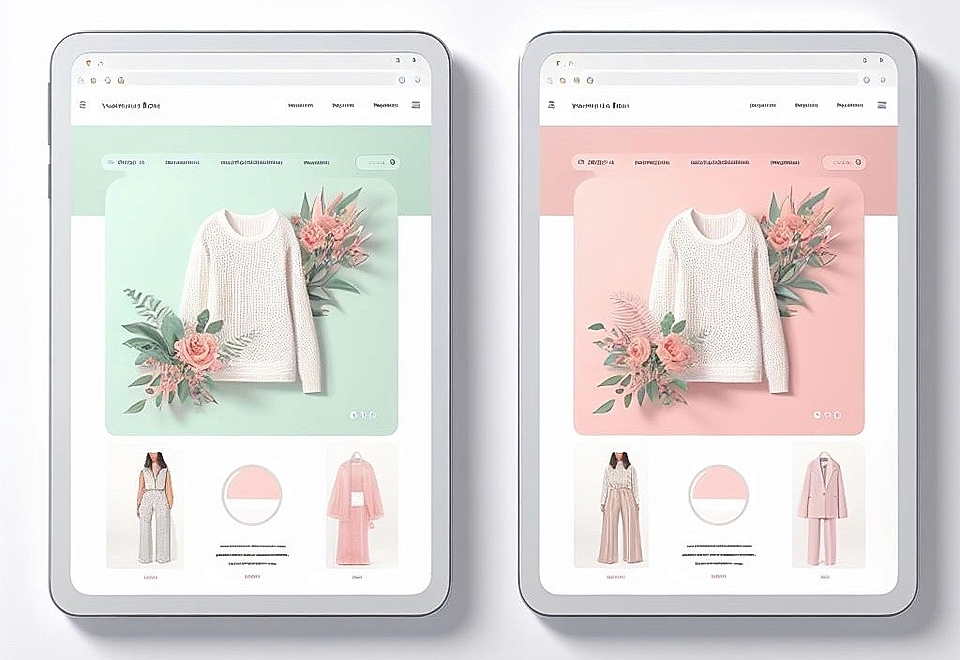7 reasons why your PPC landing pages aren’t working
What’s the most common reason for a poor PPC campaign performance?
Bad message match.
It is the mismatch between the landing page and the Google Ads campaign assets. Your website visitors might not feel like you are providing the service they are looking for (and what the ad copy texts promised).

There’s a logical reason: SaaS websitesand Google Ads accounts are often managed by separate people, and the landing page might also be used for other marketing campaigns (social media, newsletters, etc.). Edits and improvements made on the landing page might no longer match the campaign assets, but the (often) external Google Ads manager is unaware of the changes.
It takes two to tango – you’ll need to review and make changes to the PPC landing page and Google Ads campaign simultaneously to achieve optimal results.
Here, I’ll share seven common reasons why PPC landing pages might not be working for you just now and tips on how to fix those issues.
1. You are not using unique landing pages for Google Ads
Sometimes, I see people driving visits to their homepage. It’s rarely the most optimal approach.
Unless your solution is a simple, one-purpose tool, the homepage must serve a broad audience and multiple use cases.
In addition, the homepage is usually where the company’s internal politics is most visible – many stakeholders want their use cases and campaigns to be promoted at the top. If you send a request to make changes to the homepage because you’d like to test different ad campaign assets, you will most likely hear no as an answer.
Many e-commerce sites also change their taglines and banners for the Christmas season. Google Ads would not give you a high Ads Quality Score if your campaign would direct visitors to the Christmas-inspired page and you’d keep the old Google Ads assets matching the previous version.

To get the best results, set up a unique Google Ads landing page for each campaign. This way, you can optimize it solely based on the campaign performance and assets.
Often, you might have limited developer resources for marketing activities and creating new landing pages is slow and cumbersome. With tools like LandingRabbit, you can publish targeted and high-converting landing pages on your existing website in minutes.
2. Your copy and CTA buttons don’t match the search intent

Search intent is one of the trickiest things to get right. How do you know what the search intent of a keyword is?
Well, you don’t always know 100%, but let’s look at an example of the relationship between the search intent and the call-to-action (CTA) button.
Let’s say you are a software provider targeting a search phrase ‘b2b marketing analytics’, and you’ve decided to go with a CTA button text saying ‘Get a demo’.

‘Get a demo’ is a high ask – you can compare it to asking someone for a date straight after you got introduced. In this case, the website visitor will need to block time from their calendar, and because they’ve landed on your website for the first time, they don’t know you at all.
You might get a yes, but you can increase your chances by making a lower ask and helping the user to learn more about your product. For example, ask them to leave their contact details in exchange for getting a downloadable pdf or watching a pre-recorded walkthrough of the product immediately.
Similarly, you must adjust the landing page copywriting to match the CTA.
For the same example company, a campaign search phrase might be ‘b2b marketing analytics tools’, and the page uses the same CTA, ‘Get a demo’.
Now, the search intent with ‘tools’ included sounds a lot more transactional – the user is looking for a solution – and the CTA could work really well even though the user might not know your company.
But just the right CTA rarely works, and you’ll have to make sure the page copy texts highlight the customer’s pain points, agitate them to take action, and create a sense of urgency.
3. You have too many keywords in your campaign
Sometimes, the issue isn’t related to the PPC landing page design, copywriting, and CTA buttons, and no matter what optimizations you do, the conversion rates remain low.
Your ad campaign and ad group might have too many keywords.
There’s no right, one-size-fits-all amount of keywords a specific ad group should have. It all goes back to the search intent.
For example, a company selling a social media management tool could target keywords and phrases like ‘social media campaign examples’ and ‘best social media management tools’. While those two keywords are related to the same topic, they don’t have the same search intent.
The person searching for ‘social media campaign examples’ is most likely still exploring the topic and is not necessarily looking to buy anything right now. At the same time, the person searching for ‘best social media management tools’ is clearly looking for a solution.
Your landing page and CTA buttons can only serve for one audience at a time. Therefore, avoid mixing keywords and phrases with different search intents to get optimal results. The best solution is to divide your ad groups and campaigns based on the search intent.
- You have too many CTAs
A classic issue with a SaaS landing page is too many CTAs. You might include, for example, contact us, book a demo, and newsletter sign-up buttons on one page.
Take a look at this PPC landing page example:

Which of the four CTAs on Salesforce’s page would you choose and why?
I don’t know either.
Salesforce might get away with it because people are familiar with the brand, but don’t fall into the same trap with your account.
Especially if the search intent is transactional – meaning the customer is ready to purchase – avoid adding too many CTAs on your page.
And in general, avoid having too many links to other internal pages without a clear path to conversion.
Decreasing the number of CTAs is another reason you need unique landing pages for Google Ads. To create a search-engine-optimized page, your text needs internal and external links to reach a high ranking. And because the homepage will need to cater for a wider audience, it’s logical that there will be multiple call-to-actions.
5. You don’t monitor search terms
‘Search terms’ are my go-to report in Google Ads. It immediately reveals what type of audience Google drives to my landing page.
You will find ‘Search terms’ under ‘Insights and reports’:

You must monitor ‘Search terms’ every week.
Why?
One typical scenario is that Google starts driving competitor searches to increase the volume of impressions and clicks – it might happen anytime after launching a campaign.
For example, your search term might be fairly broad and generic, like ‘CRM tool’, and ads will likely appear for competitor searches like ‘Salesforce CRM tool’ or ‘Monday CRM tool’.
Sometimes, Google might add new variations just because the world around us keeps changing.
Recently, one of my Instagram-related ad groups moved focus to ‘Instagram Reels’- related searches. While it made sense from Google’s data point of view, it wasn’t the right approach to my business, my ad copy texts, and the landing page content.
That’s when you need to react and add negative keywords. You might want to target competitor searches, or in my case, ‘Instagram Reels’ as well, but it’s unlikely that the same landing page designed for another purpose will yield the best results.
After adding negative keywords, and if you’d like to target the other search phrases as well, go ahead and create a new campaign with a unique landing page.
- Social proof on the page is irrelevant
I love social proof. I even built a SaaS product called Flockler to help marketers add social proof to any website and landing page.

However, too many companies simply gather all social proof and then add the same collection of customer-generated content to every page.
Imagine if you’d land on an e-commerce site and see customer reviews of all products when viewing a specific pair of shoes. It’s confusing and distracts you from buying the product you like.
If and when adding social proof to your page, make sure the UGC content resonates with the specific landing page and search keyword.
- You are not running A/B tests

Last but not least, once you’ve hit a decent volume of page visits per week, it’s time to test, test, and test.
I’ve been guilty of this so many times – building my campaign pages once but not using content optimization tools to improve them and test variations.
With Google Ads, you can effortlessly create a copy of the ad, change the URL, and then let Google choose the most successful one based on data.
For inspiration, take a look at the best PPC landing page examples and learn how to get the most out of your Google Ads campaigns.
Summary
Google Ads (PPC) campaigns and landing pages won’t work if you don’t look at them as a married couple. Following the best practices and tips introduced in this blog post, you’ll increase your chances of getting more value out of your Google Ads budget.
Are you looking to create PPC landing pages but unsure where to start?
With LandingRabbit, you get help in planning the best possible page structure and content. Sign up for our 14-day free trial today and publish SaaS landing pages without the back-and-forth and guesswork.